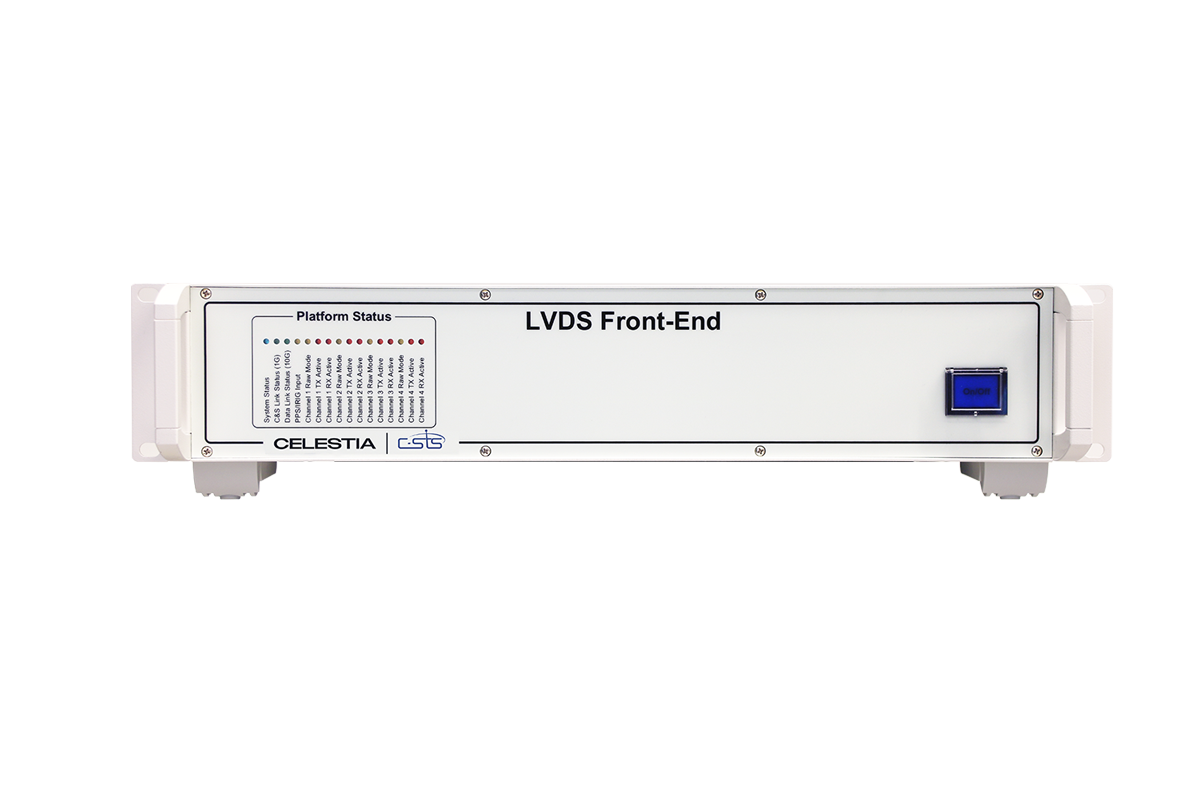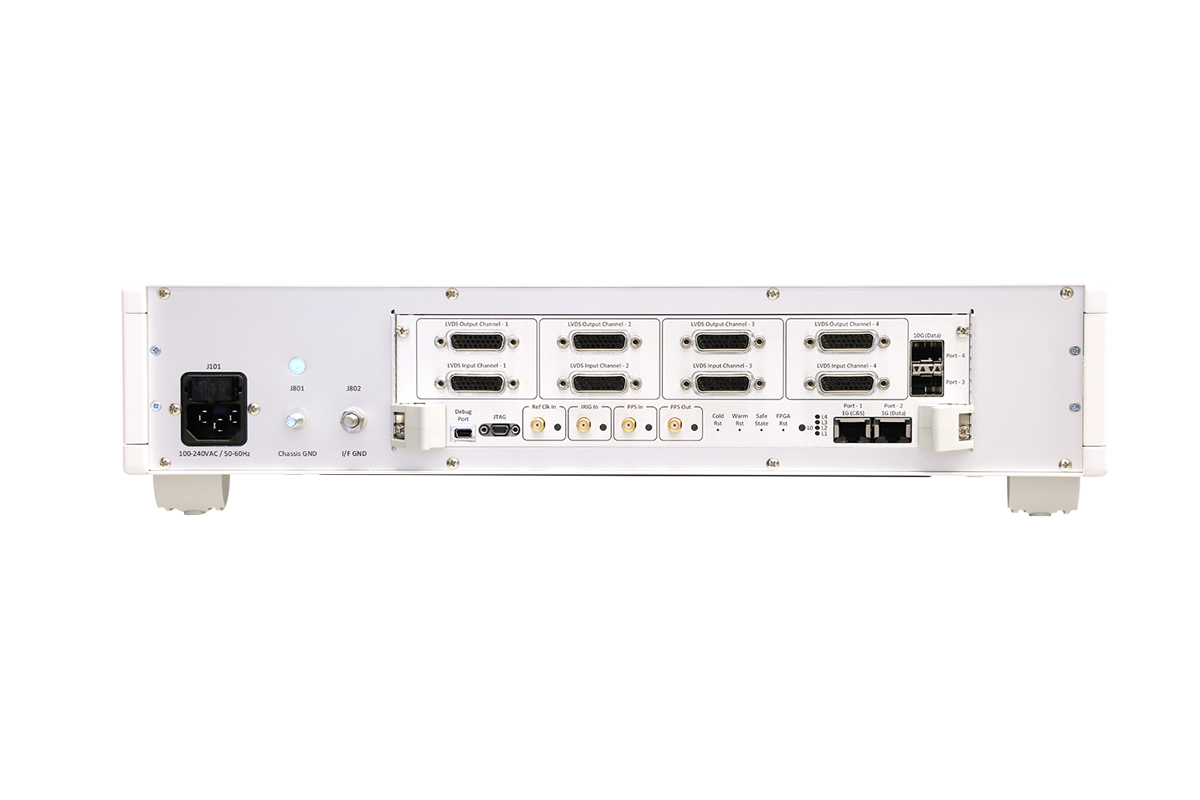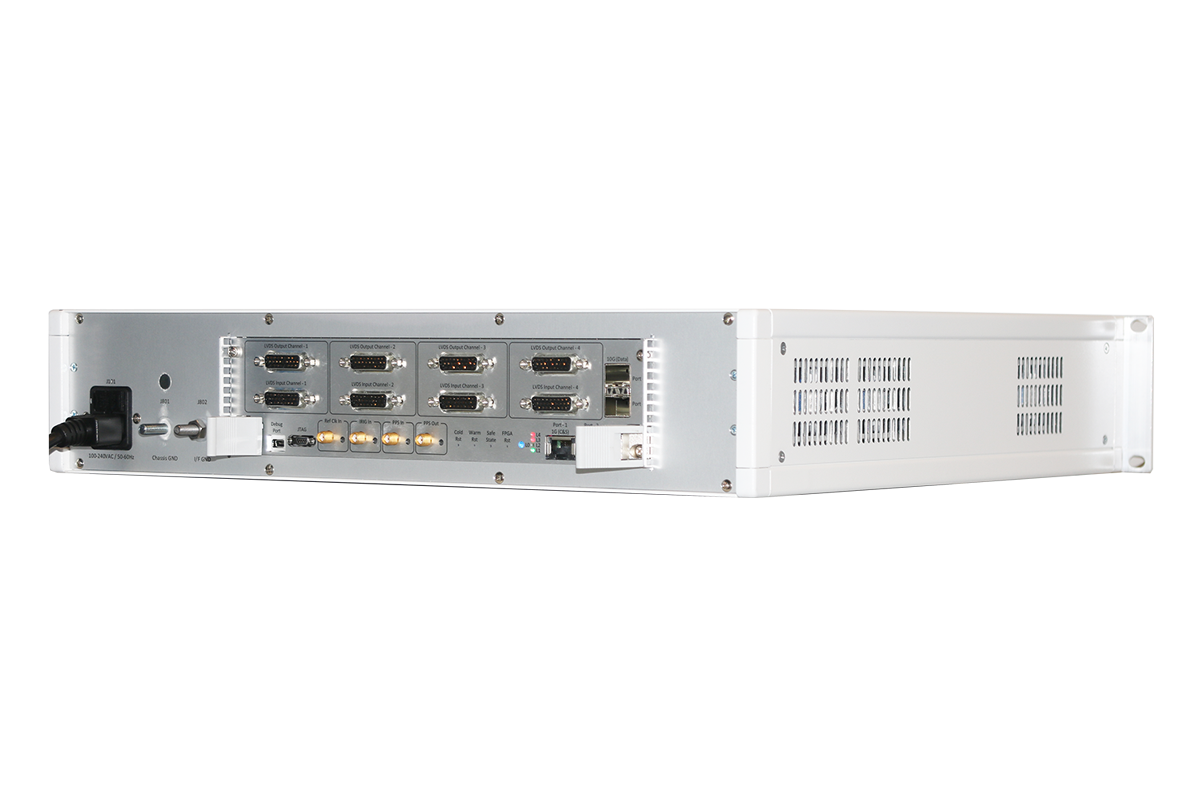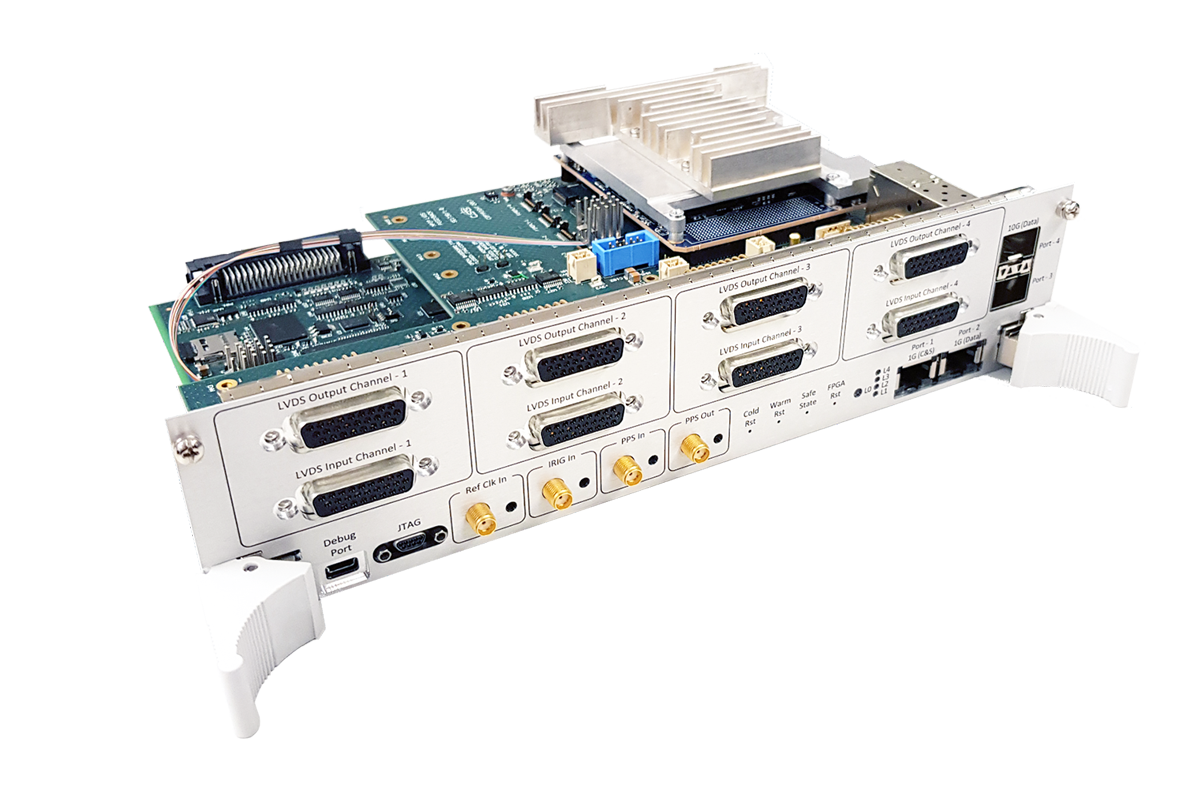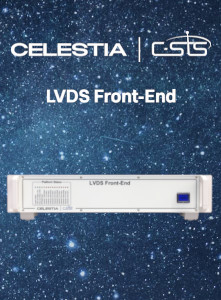Typically, the LVDS Front-End connects to a Payload, Mass Memory Unit, Laser Communication Terminal or RF Transponders. It provides the (science) data interface between the various units, either on the main, redundant or bypass interfaces. This Front-End can operate as a data source (transmit), data sink (receiver) or both at the same time.
LVDS Front-End
About LVDS Front-End
The LVDS Front-End provides the Low-Voltage Differential Signaling Data/Clock interfaces (electrical and protocol) to satellite flight equipment and can be used on all assembly, integration, and testing (AIT) levels (bread-boarding, module, unit, instrument, panel, and satellite).
Key Features
- Up to 4 Parallel Inputs and 4 Parallel Outputs (8-bits Data and Clock)
- Up to a data rate of 1Gbsp per channel in each direction in 8- bit mode
- Teaming of 2 channels (inputs or outputs) to 16-bit Parallel Interfaces supporting data rates up to 2Gbps
- Input clocking more than 125MHz
- Output clock programmable down to 1MHz and more than 125MHz in 1Hz steps
- Hardware timestamping (CUC) of received data (synchronized to PPS or IRIG)
- All LVDS I/O’s to/from the Unit Under Test (UUT) are electrically isolated
- Optional Flow Control for all input and output channels supported
- Gigabit LAN for Control and Monitoring via TCP/IP (using RJ45)
- 10Gbit LAN for Data Streaming via TCP/IP (using SFP+)
- Provided with a dedicated server to receive and store/archive the data to disk for further processing
- TIA/EIA-644-A Compliant Interfaces
- FMEA Report Available
